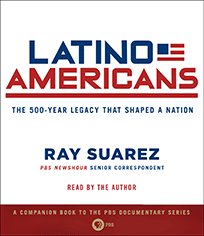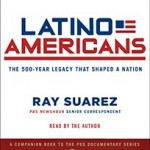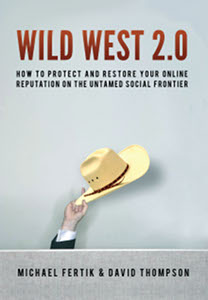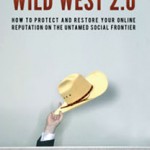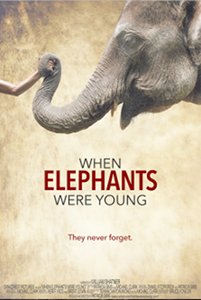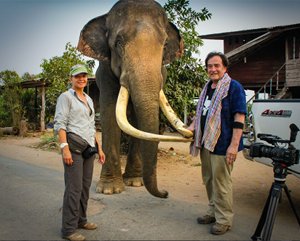Posted by Elena del Valle on August 10, 2011

Border wall at Buenos Aires National Wildlife Refuge, Arizona
Photos: Matt Clark, Border Patrol, Gerald L. Nino, U.S. Fish and Wildlife Service, Tom Smylie, Miguel de la Cueva
There are 368 miles of border between the country of Mexico and the State of Arizona. The federal government has already built 306 miles of fence along that border, 123 miles of pedestrian fence and 183 miles of vehicle fence. Per the Secure Fence Act of 2005, the federal government has already completed almost all of 651 miles of border fencing that were planned.
This fencing doesn’t include 82 miles of open border in Arizona, according to Patdollard.com. At the same time almost one third of the 1,950 miles of U.S. Mexico border lie within military, tribal, and public lands such as wilderness areas, national wildlife refuges, national forests, national monuments, state parks and hundreds of miles of national park lands (see Border Legislation, http://www.defenders.org/programs_and_policy/policy_and_legislation/border_legislation.php).
The cost of building a border fence on the U.S.-Mexico border ranges between $1 million per mile at its most affordable to as much as $15 million per mile, according to the Government Accountability Office (see Arizona seeks donors for border fence, Bloomberg News).

A Border Patrol agent sits next to an improvised fence seeking protection against rocks thrown from the Mexican side of the border
Feeling vulnerable by the three-hundred sixty-eight mile divide and fearing an “invasion” lawmakers in Arizona passed a law to raise as much as $50 million from private donors to build a border fence with inmate labor support. Build the Border Fence is the state’s fundraising campaign led by Senator Steve Smith and signed into law by Governor Janice K. Brewer with an effective date of July 20, 2011.
As of this writing, the campaign website hosted at Arizona’s Official Web Site, buildtheborderfence.com, lists 2,610 visitors and donations of $118,790. The website indicates that “The border fence constructed in Yuma, Arizona successfully thwarted 93 percent of all illegal crossings in that area. This proves that fences do in fact work!” It also states that “There have been over 35,000 deaths and murders along the U.S. Mexican border since 2006.” No sources for the data are included.

The U.S. Mexican border, Mexico is on the right side of the photo
There are two main sections that need fences in Arizona, Mathew Benson of the governor’s office explained by phone. A Yuma section which has proven to be effective and a Tucson section which only has vehicle barriers and needs reinforcement of “secure fencing” with an approximate cost of $3 million per mile. He was unaware of the number of miles of fence planned or the timeline for the project. He pointed out that the timeline would relate directly to the amount of money raised by the campaign.
“The word of people who live on the border,” Benson said when asked what information the state relied on to launch the campaign. “There is continued traffic of human traffickers and drug smugglers. It is a continuing issue. It is a difficult thing to get a figure for because it occurs in the shadows.”
The immigration numbers are down since the economy is down, he indicated. He also said that the number of illegal immigrants decreased in the Yuma section of the border since the federal government erected the fence.

A jaguar, one of the species affected by the border fence
Some believe America’s southern border is safe and well guarded. A July 25, 2011 The Washington Post article concludes: “Like it or not, the border is a much safer and better monitored place than it has been in many years, and the trend lines promise more of the same (see Illegal immigration is way down and falling fast).” In addition to skepticism from those who believe the fence’s role in controlling illegal immigration is unproven and uncertain (see Noborderwall.com and Sierra Club Borderlands Campaign http://arizona.sierraclub.org/conservation/border/index.asp) there are those concerned about the environment. In Arizona, the Border Patrol estimated that 39 species protected or proposed to be protected under the Endangered Species Act are affected by its operations (see Wildlife and Border Policy, http://www.defenders.org/programs_and_policy/habitat_conservation/federal_lands/border_policy/index.php).
Defenders of Wildlife and the Sierra Club challenged the “short-sighted decision to build a wall through the San Pedro NCA, which is one of the American Southwest’s most unique and biologically diverse areas” in 2007. Defenders of Wildlife, dedicated to the protection of all native animals and plants in their natural communities, has more than 900,000 members and activists. The Sierra Club is one of America’s oldest, largest and most influential grassroots environmental organizations.

Matt Clark, southwest representative, Defenders of Wildlife
“The news is not good for wildlife. (There is) not only a loss of habitat but also wildlife fragmentation (disconnected pieces, wildlife corridors that were affected by the wall). I don’t think the state should be proud of this program because of the extensive damage that it will do to the environment and wildlife,” said Matt Clark, southwest representative, Defenders of Wildlife by phone. “At the end of the day it’s a lose lose for the environment. The state should use inmate labor to take down the damaging sections of the wall.”

Mobility of ocelots in the fenced areas may be affected
Clark, coauthor of an article about the impact of the fence on area wildlife, explained that among the fauna affected are endangered and rare species like jaguars and ocelots (see Rare ocelot photographed near Sierra Vista, thrilling scientists by Tony Davis, Arizona Daily Star February 10, 2011) which have been sighted in Arizona as well as more common ones like mountain lions. He is concerned that by interrupting animal corridors and disrupting habitats the fence may affect genetic diversity and in the cases of rare animals with small populations lead to inbreeding (see United States border fence threatens wildlife by Melissa Gaskill).
“It’s a very good question and one we’re working on right now,” said Jose Viramontes, spokesperson, southwest region of the U.S. Fish and Wildlife Service by phone in response to a question about the impact of the federal fence on wildlife in the region and specifically in Arizona. “We actually are experiencing cross border migration among species that we know occupy the area. Fences in general are not good for wildlife.”
Posted by Elena del Valle on May 4, 2011
Hard Time Life with Sheriff Joe Arpaio in America’s Toughest Jail
A book review by Luisa Fournier-Padró

Luisa M. Fournier-Padró
Photos: Luisa M. Fournier-Padró, Skyhorse Publishing Publicity
A British young man leading a structured life he planned would lead him in a VIP limousine straight to Wall Street took a wrong turn, made a poor choice and it led him straight to prison, to an inferno. Caught in the midst of uncertainty, disorder, jumble, bewilderment or mistaken values of life he delivered himself to a nightmare. In the 304 pages of Hard Time A Brit in America’s Toughest Jail (Mainstream Publishing, $13.73) Shaun Attwood recounts his struggle with and life under terrible circumstances at Sheriff Joe Arpaio’s prison in Tucson, Arizona.
According to the book, in this setup and much talked about prison atmosphere, Attwood was able to maintain his sanity and rational behavior through daily meditation of his past actions and dedication to physical and intellectual stimulation plus a strong desire to regain his life back.
In Hard Time, he depicts how the undercurrent of a frenzied style of life, very glamorous to youngsters, can bring so much heartache after short-lived trance of rave parties high on drugs and acid music. To the reader whose knowledge of these words -rave, acid house and music- seems foreign it takes just a moment to search its meaning and background. The term rave most often is used to describe high in energy music, including some forms of trance music that features loops and synthesizers. Also, less intense forms that include ambient music and chill out music played at chill rooms that provide place for ravers to rest and relax from the intense dancing plus, get what pushers offer youngsters.

Hard Time Life with Sheriff Joe Arpaio in America’s Toughest Jail book cover
The rave wave started in mid-to-late 1980s where psychedelic and other electronic dance music emerged, caught on in clubs and everywhere around Manchester and later London. This rave bug brought by Attwood, his British accent plus his maneuvering style to promote and sell made him sort of a hero among those who needed extra stimuli to enjoy life.
Attwood claims in this story he was, “raised by good parents in a loving home in North West England, excelled at school, popular with girls at college, had no urge to run away from home; in fact, enjoyed living there so much ‘I chose’ the nearest university, Liverpool.”
“Locked in a Crown Victoria…cuffed, cramped, sweaty and wondering…How did I end up here…were his thoughts when detained in 2002 at his apartment in Tucson, Arizona, for drug use, distribution and raving parties.” No drugs had been found or any other evidence to be detained, except a trail of raving parties and exactly the wrong kind of low grade companions. Unknowingly, he had been under observance by the law for quite some time.
Setting his career sight on finance, he followed the stock market from the age of 14 and by 16 had already doubled his grandmother´s money in British Telecom. A business degree from Liverpool University in 1991 gave him a feeling the world was his; however job interviews were not coming his way. Being at an age when boys turn into young adults with minds full of dreams of a great future combined with moments of disappointments led Attwood to think of migrating to the United States with his Aunt Sue, an insurance adjuster, in Phoenix, Arizona. His parents supported his decision and waved him off Runcorn train station to conquer Wall Street that same year.
Some dishonest bluffing about status at job interviews got him a stockbroker commission, only job with a set up to work from 6 a.m. to 9 p.m. which left him very little to survive. He succeeded by stealing client account statements from garbage bags dumped by a rival securities company. Within five years he claims he “was top producer grossing more than $500,000 a year” but felt burn out and stressed.

Shaun Attwood, author, Hard Time
The drug bug won. He tried Ecstasy and the rest was a wild life of rave parties, drug enabling, and more. He was “English Shaun” and “The Bank of England,” considered one of the wealthiest people in Arizona´s rave scene but also one surrounded by security guards with tattooed bodies, Mexican Mafia and gangsters.
How many youngsters were induced down to their lowest degradation? This is the point at which this interesting book needs to be translated into several languages, films produced and more in order for important lessons to reach as many children, young adults and parents as possible. This is just an excerpt and summary of Attwood´s beginning of his decline and fall into the miserable world of drug and filth of Sheriff Arpaio´s prison, as he depicts or describes it.
Arrested during a SWAT-team dawn raid, he was accused of being the alleged head of an organization involved in a club-drug conspiracy. His social milieu was overturned and lifestyle changed dramatically. No more fancy European clothes, it was now a black and white striped jumpsuit. His new abode was a very small cell room with a toilet-no-lid to share with two more mates for their needs, many times without water. They were given old and rotten food provided in so called “Ladmo bags”, spent their time in cells where the walls were covered with cockroaches, the shower floors were full of filth and body secretions, their nights sleeping on dirty mattresses that passed on from prisoner to prisoner and much more or, should it be said much less of life´s comforts.
The names of his mates changed to nicknames forced by their abilities to perform: Wild Man, Maximum Ted, Troll, Outlaw, Silver Fox, Busta Beatz, Joey Crack, Little Italy, Magoo, Big Wood, and Gravedigger; all according to drug use and distribution, stealing, killing, sex and different types of violence.
Daily life in this prison was like a much disorganized dirty school with no classes to enrich their minds, where foul language and content was the tone. Racial discrimination (Aryan, Mexican, Italian, Blacks) was common in an environment where the strongest groups commanded weaker ones or those with impediments and set the pace for a fight, rape and kill. Life was filled with moments when prison “observers” looked the other way until it was too late and a body of a man had to be carried away, never again to return to his cell.
A loving woman stood by him for some time but weakened out due to the life sentence he was facing and a lengthy legal battle. His family stood by him and so did his Aunt Sue who made it possible to smuggle notes and letters back and forth to give birth to an anonymous blog by his parents and a media that started to attract worldwide attention. It was named Jon´s Jail Journal.
There is much more in this book where Attwood has admitted his weakness, wrong doing, guilt, repentance and desire to tell the young world that criminal behavior does not pay.
Released in 2007 he keeps his Jon´s Jail Journal alive with stories of other prisoners, their families and concerned readers. Attwood´s redemption is probably working while spends time speaking to younger adult’s audiences about the consequences of wrong choices, lifestyles and drug use plus autographing Hard Time.
The Hard Time story is worth reading and being discussed everywhere youngsters meet, even with the strong content, and description of language and acts.
Luisa Fournier-Padró has worked as writer, copywriter, translator, ghost writer, researcher and editor.
Comments:
Filed Under:
Posted by Elena del Valle on August 12, 2010
Published in a serialized format
By Hilda Luisa Díaz-Perera

Hilda Luisa Díaz-Perera
Salsa is Cuban. The bolero is Cuban. So is a cigar worthy of the name, the Cuba Libre, the mojito and also, believe it or not, the guayabera. I can’t remember life without it. I bought my Chinese-Cuban-American grandson his first guayabera, the tiniest thing, when he was barely a few days old: “Little man” I said, “Welcome to our culture!”
The guayabera is solidly etched in the psyche of a Cuban woman of my generation. I think most of us are emotionally bound to it through memories we hold very dear of fathers, grandfathers, and older family patriarchs wearing them. I can remember the day my then young and very conservative grandfather, finally gave in to my grandmother’s pleas to wear long-sleeved guayaberas instead of sitting through his meals fully suited, in the hot, Cuban weather. I recall my dad sweeping me off the floor as a little girl, smelling his clean-shaven face and feeling his crisply pressed guayabera, double-dipped in thick and gooey homemade yucca starch as he carried me in his arms. I cherish the memories of Sunday afternoons at the Yacht Club watching all the elegant men strolling everywhere in – of course – their guayaberas.
As a young girl growing up in Cuba, I instinctively understood there was magic in the guayabera. Women with men wearing them seemed to be more romantic, sensual, feminine and beautiful in their own summer attire, usually made of light summery fabrics that rustled in the sea breeze. I remember very airy organza blouses and guayaberas; white linen dresses and guayaberas; blue polka-dotted dresses and guayaberas; soft, straw wide-rimmed hats and guayaberas; cigars and guayaberas; a well-groomed gray beard and guayaberas; the aromas of sweet lime-cologne, café cubano (Cuban coffee) and guayaberas; the mojito, a cubilete game and guayaberas; the smell of the ocean permeating Havana evenings and the guayabera.
When I became an adult, and settled in the States, with a husband and young children, I made sure my husband had a guayabera. I think I was probably one of the first young Cuban women who pushed for this very special shirt to be worn again by our men. It was a national emblem that lent us a visible identity during our early years in exile when we were all frantically holding on to our values and traditions which we felt were being threatened by the larger Anglo culture surrounding us. The guayabera became the expression of an emotional need deeply buried in our national memory. In Miami, during the early 70’s, the guayabera gradually gained renewed interest among what were then known as the yuccas (young up and coming Cuban Americans), an acronym derived form the name of the edible root, very popular in the Cuban diet.
But what is the guayabera? The traditional guayabera, originally a campesino or peasant shirt, as we know it today, and as it was finally handed down to us in the first decade of the XX Century, was white and made of fine linen. It was a long-sleeved shirt, with four large pockets, and five rows of very narrow pleats, two running down the front of the shirt and three down the back. The back of the guayabera is said to have been purposely designed to look like the Cuban flag with a triangle resting on the shoulder area and five stripes running down vertically below it. The flaps at waist level on either side had developed earlier to allow for easier handling by the campesino with his machete and hunting knife. Finally, if it is a traditional guayabera, it should also include twenty-seven very small mother-of-pearl buttons.
Origins a little bit of history
Where did the guayabera come from and is there a history behind it? Most of the time, where it concerns popular history, those who have made a difference in the lives of millions of people were never aware of it, and therefore the facts of whatever they contributed to mankind is lost in the jumble of reality, fiction and, in the case of the guayabera, in the fantasy of romance.
According to research conducted by Cuban journalist Pedro Carballo Bernal, several Andalusian and later Canary Island families who settled in Cuba around the Yayabo River, in Sancti Spiritus, began making shirts that would eventually become the precursors or prototypes of today’s guayaberas. More precisely, as the story goes, the first guayabera was made in 1709, by Encarnación Núñez García, an Andalusian wife from the town of Granada, hoping to please her husband, José Pérez Rodríguez, a potter by trade, who requested that she make him comfortable, loose shirts from a bolt of fine Belgian linen they had received from Spain.
These shirts were to be worn over his trousers, have long sleeves, and big, wide front pockets where he could carry, among other things, his smokes or fumas. Since these shirts first became popular in the region of the Yayabo River, which flows through Sancti Spiritus, from west to east, they were first called yayaberas, as were the natives of the area, who at the time were identified as Yayaberas (women) and Yayaberos (men), after the name of the river. Another version of the name guayabera is that men had the habit of filling the wide pockets of their shirts with ripe guayabas or guavas, thus the possible transition of the name from yayabera to guayabera. Ripe guayabas or guavas, with their wonderful but penetrating, pungent aroma, as every other tropical fruit, exude a sugary sap that can easily stain fabrics. I cannot imagine women of the XVIII and XIX Centuries fighting a guava stain without Clorox, Shout, or Wisk. And yet oral tradition around the Sancti Spiritus area supports the guava story:

Very soon, the peasants of the surrounding countryside took to wearing the guayabera and these shirts became popular almost immediately because they were appropriate for work and the hot weather. Townsfolk, however, rejected them as being too coarse and vulgar to be worn by even the lower classes within the town. The fact that this story is so precise seems to diminish its credibility among some historians. I for one believe it could be true since we have no way of knowing what it is that History will decide to save, regardless of how trivial future generations of historians might perceive the information to be.
Researchers also point to the fact that commercial regulations between the Spanish colonies and Spain restricted certain items from being imported into the colonies, linen being one of them. Also, they claim, there were no direct commercial ties between Sancti Spiritus and Spain. But pirates did abound, especially in the Caribbean area, and were quick to offer the shortcut to waiting for the Spanish fleet. Settlers, of course, availed themselves of contraband in order to quickly obtain much needed supplies for their languishing settlements. This could explain the bolt of linen.
Dr. Armando J. Casadevall, a native of Sancti Spiritus, in his article De la chupa a la guayabera universal (From the chupa to the universal guayabera), published in La Voz Libre in Miami in 1998, rejects the Sancti Spiritus origins of the guayabera. He cites stories written about Sancti Spritus by Tadeo Martínez-Moles in 1791, and by Rafael F. Pérez Luna in 1860, as well as the 1866 edition of the encyclopedic dictionary compiled by Jacobo de la Pezuela. Casadevall did not find any references to the guayabera originating in Sancti Spiritus. He even goes as far as stating that there were very few guava plants in the area and that the guayabera was definitely not suitable attire to pick guavas in.
Casadevall says that the word guayabera was not even used in Sancti Spiritus until after the establishment of the republic in 1902 and that the preferred item of clothing among Cuban men in the XIX Century was the chupa, a short shirt with four flaps beginning at the waist and rather tight sleeves, today considered by many as the precursor of the modern guayabera. He goes on to explain that what we identify today as a guayabera was then made of cotton khaki and called camisilla in the 1920’s, when he was a youngster. His father, who was Cuban and apparently proud of his origins and his Cuban ways, was fond of wearing these chupas or camisillas. Casadevall gives credit to a tailor by the name of Ángel Serrano for having introduced the pure white, fine linen shirt called guayabera to the city of Sancti Spiritus in the 1930’s.
These two opposing stories are recorded by history and exist side by side. It is for this reason and for the sake of objectivity that I present them to the reader. Judging from the many articles I have come across, the scale of history seems to tip in favor of the story about the Andalusian couple, Encarnación and Joselillo, and their bolt of linen.
The insurgent guayabera
Ciro Bianchi Ross, writing in the Cuban government-sponsored magazine Juventud Rebelde, points out that this early, and from his point of view “questionable” story about the Sancti Spiritus origins of the guayabera, if nothing else, marks the recognition of the existence of this special shirt and places it within the Cuban historical timetable. He explains that a description of the guayabera is not even present in Cuban literature of the XIX Century, until the 1890’s when author Nicolás Heredia writes about it in his Cuban novel, Leonela. Furthermore, Bianchi Ross says that the Cuban peasant did not wear the guayabera, but rather normally donned a loose blue or striped shirt over his trousers, a straw hat or sombrero de yarey, boots, a neckerchief to wipe off his sweat and his machete.
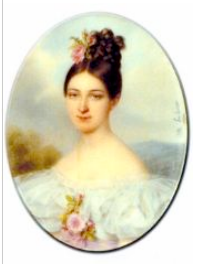
When the Countess of Merlin, (Havana 1789– París 1852), a Cuban aristocrat married to a French count, who is considered the first female Cuban writer, visited Havana in 1840, the guayabera was either not popular yet among the Cuban peasantry around the capital, or it did not go by that name. She does not mention it in any of her well-known writings or in the copious journal she kept of the trip. However, the fact that she does not mention the guayabera, does not mean it did not exist, at least as a prototype.
Guadalupe Yaujar in her article La guayabera cubana, quotes chroniclers of the mid-XIX Century who write that the guayabera existed and was already popular when Narciso López first raised the Cuban flag in the city of Cárdenas on May 19th, 1850. In 1856 or ‘57, Juan Cristóbal Nápoles Fajardo, better known in Cuban literature as “El Cucalambé”, published Rumores del hórmigo, a book of poetry that includes a description of the guayabera and calls it by its present name, establishing him as the first writer on record to acknowledge the existence and use of the guayabera. He became the most quoted and most popular poet of the mid- XIX Century in Cuba, probably helping to disseminate awareness of the guayabera throughout the island. El Cucalambé was honored in 1953 by the Cuban government which chose his birthday, July 1, as the official Día de la Guayabera (Guayabera Day).
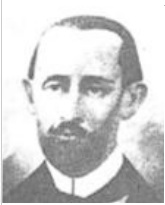
By 1866, in the town of Güines, political reformer and activist Nicolás Azcárate is elected delegate to the Information Council of the Spanish courts or parliament. His followers organized a victory celebration in his honor and it is noted by eyewitnesses that the peasants of the surrounding countryside showed up wearing their classical guayaberas and jipijapa or straw hats. The operative word here is classical since it implies time, design, tradition and the conscious acceptance by a social group that an item of clothing clearly identifies them. Writers also agree that when Carlos Manuel de Céspedes rang the bell of his sugar mill La Demajagua on October 10th, 1868, calling for Cuban independence from Spain, some of the men who joined him were wearing, not the military shirt known then as the chamarreta, as Ciro Bianchi insists they did, but rather one very similar to what is known now as the guayabera.
I do not agree with Bianchi Ross on this fact because it seems incongruous that a group of colonial men, ready to fight the mother country for the freedom of their land, would go to do so dressed in the enemy’s uniform. I tend to think that if they were indeed not wearing a guayabera, they had to be wearing something very similar, a regular light colored, long sleeve shirt or camisa, a striped peasant shirt, or some early guayabera design.
This puts us right in the middle of an ongoing debate as to whether or not the Cuban army used the guayabera during the fight against Spanish colonialism. Many photos still exist showing the Cuban mambí, the name given to the Cuban insurgents in the wars for independence, men like generals Enrique Loynaz del Castillo and Máximo Gómez, commander-in-chief of the Cuban Army, wearing a shirt that is indeed very similar to the guayabera.
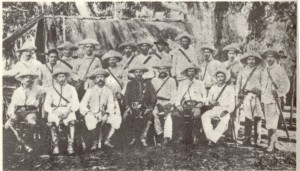
The mambí/mambises or Cuban insurgents in the wars for independence against Spain![]()
The Cuban army had no military uniform and dressed in whatever the men could find. At the start of the last War of Independence in 1895, in his Diario de campaña, Cuban national hero, José Martí, mentions the chamarreta, the military shirt, and not the guayabera. Charito Bolaños, the woman who reputedly sewed for many insurgents during the war, among whom were generals of the stature of Mayía Rodríguez and Mario García Menocal, states that she never sent a guayabera to the manigua, as the rough wilderness where the Cuban army fought against the Spaniards was called. But then, men such as those mentioned above, who could have had clothing sewn especially for them, were probably not going to choose to wear a shirt that was so similar to the one used by the common peasant. It must be remembered that Cuban wars for independence were fought for political independence from Spain, not necessarily for social equality.
María Elena Molinet, Cuban costume designer in charge of important historical films that cover this period of Cuban history, such as Baraguá and La primera carga al machete (The First Charge of the Machete), after collecting and studying many such photos, asserts that none of the Cuban rebels is wearing a guayabera. It must be said, however, that the chamarreta had many details that coincided with the design of the guayabera, such as the long sleeves, the four large front pockets and the side flaps to ease it over men’s trousers. Also, at the onset, the wars began and were fought mainly on the center-east side of the island where supposedly the guayabera already had some, if faint, hold on the peasants. The greater insurgent army was not made up of the rich hacendados or landowners, but rather of the poor peasants and the small town lower classes.
The fact though that the controversy exists, is an indication that the guayabera was probably already competing favorably against very similar shirts used by Cuban men of the XIX Century. It is also possible that as the century unfolded, and the popularity of the guayabera increased, it underwent important changes that improved its design. This in part explains the variations described as well as assertions made by observers of the time, which, as history has it, lend themselves well to fuel further discussion.
A bit of sewing
So, the shirt that would become today’s guayabera was probably first made sometime in the XVIII Century. It then developed gradually over the XIX Century, not as a design made by one person, but rather as the result of the many shirt variations existing in the island and the efforts of several seamstresses and tailors who complied with shifts in taste and fashion by adding or deleting features to the original prototype.
Someone, we cannot identify who, added the collar. Someone else, who surely possessed very high sewing skills, must have thought of adding the narrow pleats with their minuscule stitches down the front and back of the shirt. Then, at some point during the Cuban wars for independence from 1868 to 1898, the design of the Cuban flag was incorporated onto the back of the guayabera.
This idea probably originated from the Cuban insurgents’ habit of wearing Cuban flags, or red and blue handkerchiefs tied together on the backs or fronts of their shirts, along with their religious medals, as a symbol of patriotism. But Spanish authorities declared this practice a form of treason and soon the Spanish soldiers began executing any Cuban insurgent caught wearing a Cuban flag. Some expert hands must have drawn the highly stylized and clever design of the triangle on the shoulder area of the shirt and divided the back into horizontal stripes separated by rows of pleats.
A person deft with needle and thread must have sewn the triangle on. One of the angles of this triangle falls very visibly at the top center of the back, as they do on each front canesú or yoke, and on the top of each pocket of an authentic guayabera. Any error in stitching, or failure to align or fold the fabrics properly would cheapen or ruin the piece. It must have been a very patient person who decided to pepper the shirt with its twenty-seven tiny buttons, and was then willing to sew them on and make 27 buttonholes, all by hand!
Finally somebody must have noticed the wear and tear the flaps were always under and decided to reinforce the bottom edges and side openings. Most writers agree that the traditional guayabera owes much of its success and beauty, not surprisingly, to shirt makers and seamstresses of the Sancti Spiritus area and of another town nearby called Zaza del Medio.

Guayabera maker Ramon Puig and Glenn Lindgren (of The Three Guys From Miami) wearing Puig guayaberas
It is indeed a pity that users who buy guayaberas are unaware of the sewing skills that were required to finally arrive at the design of the guayabera as we know it today. Its early evolution took place in the absence of the precision sewing instruments available to us. I was taught to sew by my grandmother, who learned the craft as a young girl working with her father, a Spanish tailor who established his shop in the city of Havana in the 1920’s.
Among many other sewing skills, she taught me how to make tiny buttonholes by hand. It is a painstakingly slow, careful process that of making tiny stitches that must fall one after the other in a horizontal row to secure the fabric underneath. One hand crunches over the small needle and thread; the other must hold the opening still, in order to avoid stretching at the edges of the cut fabric, in this case, fine linen, which, with the well defined warp and woof of natural fibers, ravels easily and would render a sagging and crooked buttonhole. I never qualified, for lack of patience and dexterity, to make twenty-seven of those buttonholes in a row! I’m glad my grandmother also taught me Math!
The final touch came after the guayabera was finished. Experienced pressers where required to press the seams, pleats, buttonholes and folds into place. Later, when the guayabera had to be washed, a home-made starch was concocted from boiling water and grated yucca that was then strained and allowed to cool. The starch was more or less diluted with water depending on the user’s preference. The guayabera would be dipped into the mixture once or twice and then hung to dry. After it dried, the laundress would sprinkle water on the stiff sun-dried shirt and then wrap into a bundle until it was time to press it. I wonder if Ramón Puig, famous for his guayabera store, uses Niagara starch today. I do!
La Guayabera in the XX Century
As the guayabera became more popular, each region in Cuba gave it its own name. In Camagüey province, it was called camagüeyana; along the trocha or military divide during the wars for independence, it was known as trochana; in the town of Manzanillo, it was manzanillera; it was guayabana around the city of Havana, where it is said to have adopted the shirt collar for elegance. Today, although on the world stage it goes under the name of guayabera, there are many places where it is known as habanera and cubanita or little Cuban.
The guayabera came into its own during the XX Century. Cuban peasants were already wearing it and the politicians started using the guayabera during their campaign tours in the countryside. Soon it became the shirt of choice in the popular dance academies in Havana. For more formal occasions, a bow tie was added. Gradually, as more prominent men became followers, the guayabera was able to gain entrance into the most exclusive places and even official government ceremonies.
The earliest graphic testimony available of the guayabera is from 1906, even though the word guayabera is not formally legitimized as a Cuban noun specifically naming the shirt until 1921, when a man by the name of Constantino Suárez included it in his book Vocabulario cubano or Cuban Vocabulary, identifying it as attire popular among the peasants in the countryside.
The guayabera, in this final and now considered “traditional” version, first conquered the towns in the provinces. Then in 1908, during the government of General José Miguel Gómez, coincidentally a native of Sancti Spiritus, it finally gains access to Havana. After the fall of the Machado dictatorship in 1933, and due also in part to the Crash of 1929, there is a shift in social attitudes and customs that allows for a more relaxed dress code, which in turn helps open higher social possibilities for the guayabera.
President Carlos Mendieta, apparently decreed the guayabera as the national shirt sometime during his short administration which lasted from 1934 to 1935, but that document has never been found. Bianchi Ross argues that the same happened to the danzón, an early XX Century Cuban dance form widely followed in Latin America, and no one questions its origins. President Grau San Martin, who comes to power in 1944, implementing widespread social reforms under the Partido Auténtico, which also supported the symbolism of Cuban national identity, adopts the guayabera as his favorite shirt.
Even though later, his successor, President Carlos Prío Socarrás, bans it as inappropriate attire for official government business, the impetus given to the guayabera during the Grau administration is strong enough to trigger the next stage in its development: an amazing explosion of popularity without historical precedence; that took all the Cuban department stores and clothing warehouses by surprise, turning them, observes Isabel Fernández de Amado Blanco, a contemporary journalist, into guayabera showcases; so much so, that in 1948 a symposium was held in Havana at the prestigious Lyceum Lawn and Tennis Club, to discuss the use and abuse of the guayabera.
The humble shirt of the legend of Encarnación and Joselillo had arrived and was quickly altering the Cuban way of life as it had been known up to that point, threatening to displace all other forms of masculine attire. One of the discussions at the symposium centered on identifying under which circumstances and at what times during the day or evening, the wearing of guayaberas could be considered appropriate!
In the 1960’s, the guayabera left Cuba as so many of us did and went into exile in the Yucatan Peninsula and in the State of Florida. Close trade relations between the island and the Yucatan were ongoing since colonial times, well before the advent of Castro and his Revolution. The guayabera settled in these logical choices of destination since wealthy Yucatecan Mexicans used to purchase them in well-known pre-Castro department stores such as El Encanto and Fin de Siglo, or in establishments specializing in the manufacture of guayaberas, one of them being Ramón Puig, who among several others, has been producing them in the City of Miami for the last quarter century.
Because they could not obtain the guayabera in Cuba anymore, the Yucatecan Mexican entrepreneurs decided to begin manufacturing the shirt in the city of Merida, which advertises itself as “the capital of the guayabera.” These guayaberas are probably the ones that have come to be known, maybe incorrectly, as the “Mexican wedding shirt.” The guayabera also found its way into the textile industries of Colombia and Panama in our continent, and of China and the Philippines in Asia, where new fabrics, colors and designs have been developed, and where, in the case of China, the guayabera is manufactured very inexpensively to the detriment of its quality and elegance.
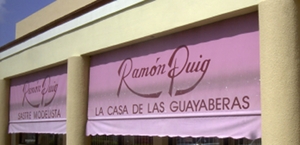
It has also severely undercut the Yucatecan industry. On the other hand, Ramón Puig, who considers himself a Spaniard from Sancti Spiritus, has been making Cuban guayaberas for the last 59 years, 25 of them in Miami, Florida. Among his influential clients were Ernest Hemingway in Havana, and Ronald Reagan, Silvester Stallone, Robert de Niro and many others in the United States. According to the article, “The rise of the guayabera in cutting edge fashion,” written by Enrique Fernández of The Miami Herald, as published in Havana Journal, “Puig’s custom guayaberas start at $350 and can reach $600, depending on the cloth and size of the client. Off-the-rack linen or cotton long-sleeved garments sell for $80. Puig’s store sells about 80 guayaberas a day.” And he can’t keep up. Fernández describes it (and I quote): “The real guayabera. Not the short-sleeved poly-blend shirt South Beach youths wear. Irish linen or Egyptian cotton. Always long-sleeved, preferable custom-made. Embroidered initials. Needless to say, pricey.”
Fine linen, no matter its origins, the long sleeves, the color white, and precision sewing, including embroidering one cuff or one pocket with the owner’s initials, have always marked the elegant guayabera since the 1930’s, and although now these details might be perceived as signals of a resurgence of the shirt, that mark a new direction away from the cheap Chinese and Filipino versions available to common or less refined tastes, the guayabera took a good 300 years to reach its fineness and I for one tend to reject some of its more common, tacky second cousins.
The guayabera can be very flexible and eager to please. I am not in the market for a $600 guayabera or, for that matter, for the $350 one either! Luckily, for most of us, there exist affordable, fine, well-made guayaberas to purchase and wear proudly. I counted just in case, and mine even has all the 27 buttons!
For almost all of those 300 years of existence, the guayabera remained a Cuban thing, known and worn by Cubans and those familiar with the Cuban cultural heritage and the Cuban way of life, be they natives or foreigners. It is probably through Hollywood movies and mass communications and other similar venues, that it reaches the world stage in the ‘30s, ‘40s’, and ‘50s. In recent years most Cuban musicians and actors as well as other Caribbean entertainers have adopted the guayabera, because it stands for the romance and the mysterious aura surrounding anything Cuban, as well as for tropical living in general. Many Latin American countries especially those in the Caribbean basin claim the guayabera as their own, but it is only Cuba that can really trace its origins in the island.
The guayabera was nimble enough to jump across all sorts of boundaries, physical, social and emotional, and to become a favorite piece of clothing in the most unlikely places of the globe. We must remember that until 1959, Cuba was accessible to one and all. It gave unselfishly of its culture and the world partook of it. The pre-1959 guayabera traveled freely to Mexico, Puerto Rico, Panama, the Dominican Republic, Japan and the Philippines, as did Cuban orchestras and entertainers whose work helped spread Cuban culture and heritage around the globe.
Thus we find guayaberas in China, in Egypt, in Japan, and even Africa, where, in the mid 70’s, under the Castro regime, it is possible that Cuban soldiers brought them along when they went to fight in Angola. Compay Segundo and The Buenavista Social Club must be given credit not only for having recaptured rhythms and songs of early XX Century Cuban music. Although they were older musicians, they rejuvenated and re-established the guayabera around the world. By using it onstage they became models to potential users, placing it within the context of a traditional, respected art form, joy and celebration.
Lately, we have seen its popularity soar as many Latin American heads of state wear them to regional conferences and meetings, lending the guayabera undeniable recognition as a shirt of preference among the very conservative ruling elites. Who else has been seen in his guayabera? Emilio Estefan, Danny Glover, Prince Albert of Monaco, Sting, my very special American friend Bob Anders to whom my husband and I gave one, and many, many more!
Afterword
Interestingly enough, as I was doing research for this piece, I came across several articles written by Cuban researchers living in Cuba that bemoan the fact that younger generations of Cubans raised in the island were not interested in the guayabera, did not wear it and considered it attire only for older men. Coincidentally, then, as the guayabera was becoming more popular among the younger Cuban generations that went into exile, the opposite was true in Cuba, where the use of the guayabera waned, partly because with the revolution, it somehow became tied to the government’s definition of corrupt politics and politicians, and the so-called “decadent” way of life of pre-Castro Cuba.
Probably a better reason is that as the Cuban revolution implemented its communist economic policies, which included the taking over of all of the means of production and distribution, such as the textile industry and all of the existing department stores, the country became immersed in years of scarcity and dearth during which very basic materials like cloth and thread to make guayaberas, were not readily available. Another reason very prevalent in the late 60’s, 70’s and 80’s, probably still valid today, helps explain this rejection of the guayabera among other Cuban patriotic symbols, especially that of national hero José Martí: unhappily, it was probably the only way that the Cuban youth, trapped by a Marxist system, as many believed they were, could quietly reject a revolution which insisted on ramming political indoctrination down their throats disguised as patriotism.
José Aurelio Paz was probably one of the first Cuban writers in the island to identify the negative attitude towards the guayabera evident among Cubans living in Cuba. In his article for Juventud Rebelde, he suggests that they should recapture the pride of wearing the guayabera and shed the shame associated with it, which is understood as the corrupt government bureaucrats and politicians of the pre-Castro era. But, although he identifies shame as one of the reasons for its lack of popularity among the younger generations, he doesn’t define very successfully the source of that shame. He goes on to say that whereas the guayabera came forth from the working classes and was once available at prices easily affordable by the common man, nowadays it is only available in commercial establishments limited to tourists, at prices too high to fit the skinny national salaries.
One supposedly Cuban online store I checked, TurismoenCuba.com uses the slogan “Powered by Amazon.” All of us who have had a business on the internet know what that refers to. Prices go from $24.99 to $55 US dollars, an amount difficult to come up with by a common working class Cuban who, unless he or she is employed in the tourist industry, his salary does not even come close to $20 Cuban pesos a month. But, of course, this Cuban online store, is not for Cubans inside the island who don’t have ready internet access or credit cards to purchase over the internet. Cubans in Cuba who want to buy a guayabera will not be able to do so in any store within their reach. And yet, guayaberas are available in the government-sponsored stores for foreigners (such as Cubans in exile and their families who visit the island), tourists, diplomats and the privileged of the Cuban ruling elite.
The government-sponsored online store that offers Cuban-made products, Mallcubano.com, does not even include a guayabera in its online catalog. Oh! And one note of irony here: “mallcubano”, pronounced in Spanish, sounds like mal cubano which means “bad Cuban”, “Cuban malady” or “Cuban evil”, but none of them good… Um, I wonder who came up with such a name?
In order to rescue the dwindling interest in the guayabera evident inside Cuba, writer Ciro Bianchi Ross along with Carlos Figueroa Crespo and others, suggested the establishment of The Socio-Political Project of The Guayabera within The Provincial Historical Museun of Sancti Spiritus. The Project already includes guayaberas donated by a roster of politically slanted though undoubtedly significant and historically prominent people of the last 50 years. They are the distinguished famous or infamous, depending on which side of the political divide you belong to, or how objective you manage to stay as you read this list, since, of course, donations of guayaberas by the political center and the political right are non-existing. The list includes, Fidel and Raúl Castro; Hugo Chávez, who donated his red guayabera, a gift from Inacio Lula da Silva, President of Brazil; Colombian and Guatemalan writers, the Nobel laureates Gabriel García Márquez and Miguel Ángel Asturias; Shafick Handal (1930-2006) Secretary-General of the Communist Party of El Salvador; the Puertorrican independentists Rafael Cancel Miranda and Filiberto Ojea, and world renowned Cuban ballerina Alicia Alonso, as well as many others of the political left.
It begs the question, are these personalities who have been given the task of “uplifting” the pride and honor of the guayabera, and of redefining one of Cuba’s most endearing symbols by uncoupling it from the pre-Castro imagery of “corrupt politicians” and then re-associating it with their own supposedly pristine Marxist values, up to the challenge? Can they actually sway the minds of thousands who can finally see beyond the party line, but are still not able to purchase a half-way decent guayabera, in their own native Cuba?
One thing is certain: Miami, the capital of the Cuban exile, may or may not have a guayabera museum and although I think it is a terrific idea, the fact is that we could establish one not because we are not interested in the guayabera, but rather because we have made it popular in the most unexpected places and seen it escalate the loftiest of scenarios. There are guayaberas for all tastes and pocket sizes, and we certainly are not ashamed to wear one. National symbols are not responsible for the actions of irresponsible greedy politicians no matter where they fall within the political spectrum. A reminder: the next time you find yourself close to a guayabera, if you are Cuban, do this: run your fingers over the deftly sewn back pleats that together make up the Cuban flag!
The author holds a M.A. from the University of Miami. She is a free-lance writer and the editor of http://jose-marti.org and http://unacuartilla.wordpress.com.
Editor’s note: Ramon Puig photos courtesy of Three Guys From Miami™
Sources:
La guayabera por María Argelia Vizcaíno
http://jose-marti.org/jose_marti/simboloscubania/guayabera/laguayabera/01laguayabera.htm
La guayabera cubana
http://www.radiohc.cu/espanol/a_sugerencias/2010/jun/guayabera.htm
La guayabera en el Cocodrilo Azul
http://cocodriloazul.blogcip.cu/2009/10/24/la-guayabera/
Verdad y mentira de la guayabera cubana
http://www.juventudrebelde.cu/columnas/lectura/2010-05-22/verdad-y-mentira-de-la-guayabera/
El origen de la guayabera
http://lecturas.cibercuba.com/lecturas/artes/el_origen_de_la_guayabera.html
Por qué la guayabera es puramente cubana
http://www.autentico.org/oa09148.php
García Márquez dona guayabera a museo
http://www.larepublica.pe/cultural/13/04/2010/garcia-marquez-dona-guayabera-museo-cubano
Chávez dona guayabera que le regaló Lula
http://www.7medios.com/index.php/2009/10/19/chavez-dona-guayabera-que-le-regalo-lula-a-institucion-cultural-cubana/
Museo cubano atesora guayaberas de personajes famosos
http://spanish.china.org.cn/international/txt/2010-04/25/content_19901930.htm
Guayaberas impopulares y escasas en Cuba
http://www.turismoencuba.com/Guayaberas-impopulares-y-escasas-en-Cuba_i718.html
T-Shirts, Guayaberas y algo más
http://www.turismoencuba.com/T-shirts-Guayaberas-Cubanas-y-algo-mas-_i197.html
¿Por qué se le puso guayabera a esa prenda de vestir?
http://www.desdecuba.com/mason/?p=1613
Contrapunteo Caribe entre el liqui-liqui y la guayabera por Juan Jorge Álvarez Sánchez
http://www.delagracia.de/san_1.htm
La Guayabera por Hilda Anaya Sotelo
http://es.shvoong.com/humanities/1810175-la-guayabera/
Diferencia entre la guayabera yucateca y la guayabera cubana
http://www.guayaberas.com.mx/articulos/la-guayabera-se-origino-en-cuba/
María Elena Molinat
http://www.opushabana.cu/pdf/MA-2008/Maria_Elena_Mollinet.pdf
La diferencia entre la guayabera yucateca y la guayabera cubana
http://www.guayaberas.com.mx/articulos/diferencia-entre-la-guayabera-yucateca-y-la-guayabera-cubana/
Mallcubano.com
https://www.mallcubano.com/men_207categ.html
Comments:
Filed Under:


